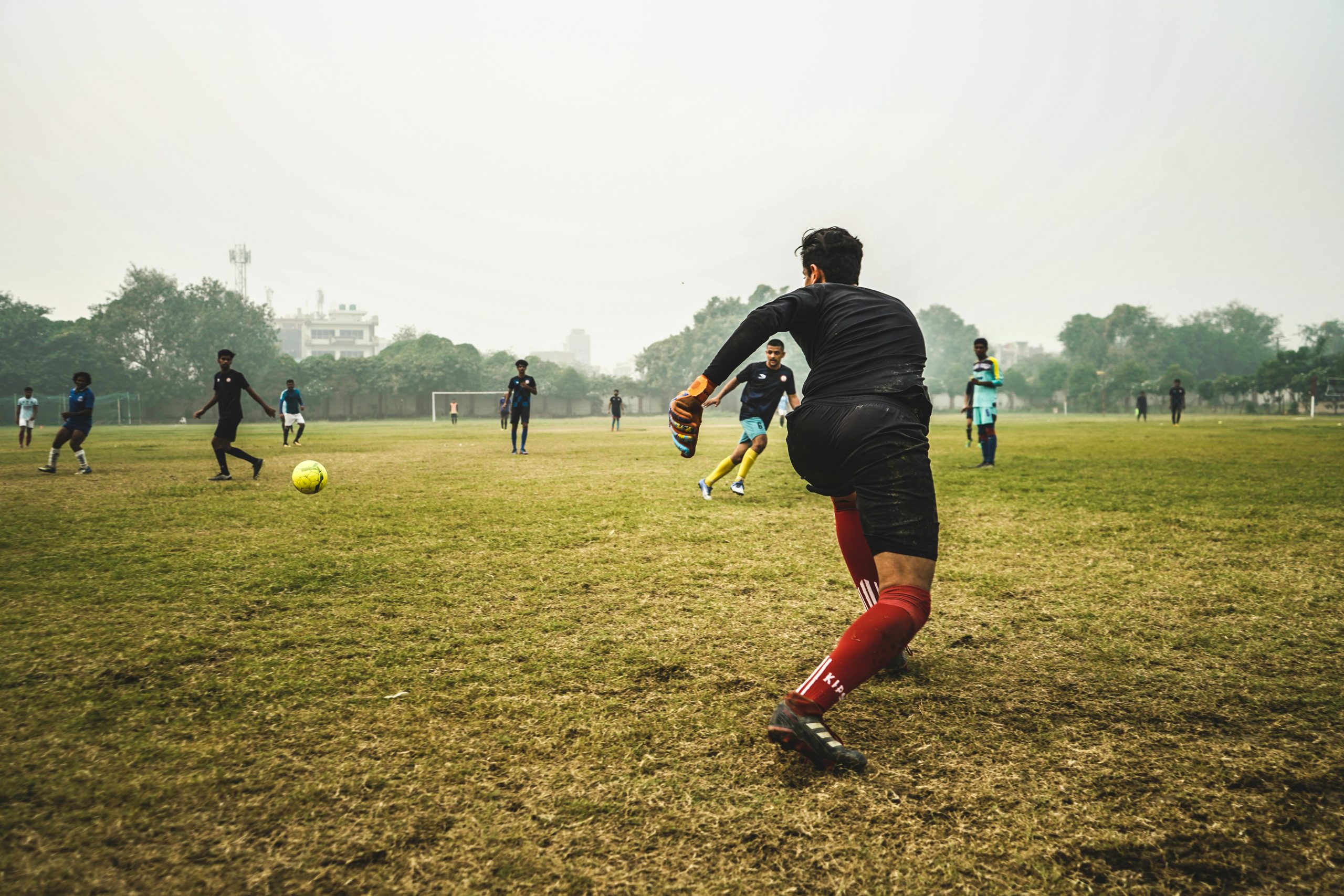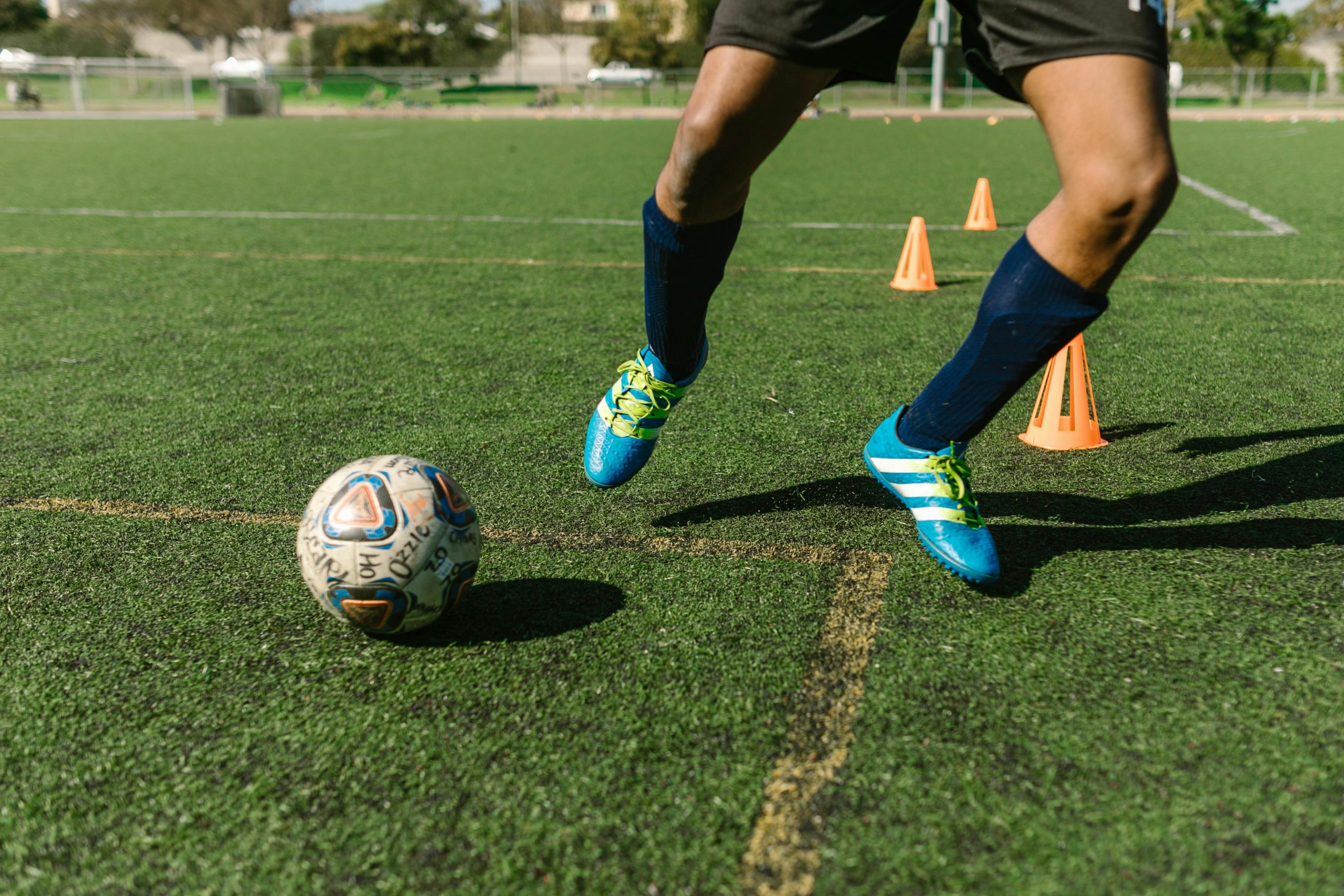Kicking a soccer ball is one thing. Kicking a soccer ball under pressure, when the clock is ticking, the crowd is roaring, and defenders are closing in? That’s an entirely different beast. In those high-stakes moments, technique alone isn’t enough—you need the right mindset, body control, and decision-making skills to perform.
This guide will teach you how to kick a soccer ball under pressure, with real-world techniques used by pros and effective mental strategies that help you stay focused when it counts the most.
Why Does Pressure Affect How You Kick a Soccer Ball?
Pressure situations—like penalty kicks, last-minute shots, or tight passes with defenders in your face—can mess with your timing, focus, and even your muscle memory. Here’s why:
- Cognitive overload: Your brain is processing crowd noise, opponents, and outcomes all at once.
- Tightened muscles: Anxiety causes your body to tense up, which affects your form.
- Rushed decisions: The fear of losing possession can make you panic and kick without proper setup.
Understanding what changes under pressure is step one in fixing it.
How to Mentally Prepare for High-Pressure Kicks

1. Visualize Game Scenarios
Mental imagery helps you rehearse success. Before practice or a match, close your eyes and walk through a sequence in your mind:
- Picture the ball arriving at your feet smoothly.
- Imagine a defender rushing in, and you staying cool and composed.
- See yourself making a clean, confident pass or scoring shot.
Doing this regularly makes high-pressure moments feel familiar, not frightening.
2. Breathe Before You Kick
Breathing helps center your focus when adrenaline spikes. A short, controlled breath cycle right before your kick can be enough to collect yourself.
Try this:
- Inhale slowly for 4 seconds
- Hold for 2 seconds
- Exhale for 4 seconds
This helps your body relax and clears your head just long enough to focus on a clean strike.
3. Develop a Pre-Kick Routine
A simple, repeatable routine can reduce pressure and increase confidence. The key is consistency—do the same thing before every kick so your brain gets into “execution mode.”
Examples include:
- Always taking two steps back and one to the side
- Wiping your hands or jersey
- Saying a silent phrase like “focus” or “trust”
Whatever you choose, keep it short and make it yours.
How to Build Confidence Before the Ball Even Arrives
One of the most overlooked parts of kicking under pressure is what happens before you even touch the ball. If you’re confident when the ball’s coming your way, the actual kick becomes easier to execute.
Here’s how to build that kind of confidence:
1. Scan the Field Early
Before receiving the ball, always take a quick glance around. Knowing who’s nearby and where your options are lets you:
- Plan your next move before the pressure arrives
- Stay calm because you’re not caught off guard
- Avoid wasting time looking around after receiving
It’s a small habit that creates a huge confidence boost.
2. Call for the Ball with Purpose
Don’t just hope the ball comes to you—demand it. When you call for the ball decisively, you:
- Signal confidence to teammates (and even to opponents)
- Mentally commit to what you’re about to do
- Prepare your body to receive and kick without hesitation
3. Trust Your Preparation
Confidence doesn’t come from luck—it comes from work. If you’ve trained consistently, remind yourself of that.
- Think back to how often you’ve practiced the move
- Repeat a personal mantra like “I’ve done this a hundred times”
- Use muscle memory instead of second-guessing
Confidence builds long before the ball shows up. The more you prepare, the less pressure rattles you.
How to Kick a Soccer Ball Under Pressure Without Losing Form
Staying composed means sticking to the fundamentals—even when you feel rushed. Here’s what to keep in mind:
1. Prioritize Body Positioning
When you’re under pressure, it’s tempting to lean back or stretch to reach the ball. This kills accuracy and power. Instead:
- Keep your upper body slightly forward—shoulders over the ball
- Plant your non-kicking foot firmly beside the ball, pointing toward your target
- Keep your head down through contact to ensure a clean connection
Good posture builds consistent kicks, especially when your nerves want to throw you off.
2. Keep Your Kicks Simple
In pressure moments, flashy rarely works. Instead of going for the perfect shot, go for the reliable one.
- Use the inside of your foot for controlled passes or shots
- Aim for low, accurate balls, not wild rockets
- Choose the easiest effective option, not the most dramatic
Making the right decision under pressure is more important than making a highlight reel play.
3. Make Your First Touch Count
If your first touch is poor, you’ve already lost the advantage. Good first touches buy you time and space—even in chaos.
Work on:
- Cushioning the ball so it stays close
- Angling your body to shield the ball from opponents
- Using the first touch to guide the ball where you want to kick, not where it randomly rolls
In pressure moments, the first touch is often the only touch that matters.
What Types of Pressure Situations Should You Train For?
Being prepared means practicing the right scenarios. Here are the most common ones to train for:
1. 1v1 With a Defender
A lot can go wrong when a defender’s closing in fast. To get comfortable:
- Work on holding off defenders with your body
- Practice making quick decisions with minimal touches
- Use body feints to fake one direction, then kick in the other
2. Breakaways and Fast Transitions
In open play, things move fast. You need to make up your mind while sprinting.
- Run drills where you finish on goal at full speed
- Mix in choices: pass, shoot, or dribble—decide on the fly
3. Last-Minute Set Pieces
Late-game set pieces are some of the highest-pressure moments.
- Practice taking free kicks or corners while teammates charge in
- Use countdowns to simulate a time crunch and pressure mindset
4. Crowd Simulation and Noise Drills
If you’ve only trained in silence, you’ll struggle in a loud match.
- Set up drills with speakers or teammates yelling
- Have someone distract you while you line up to kick
It’s all about getting used to noise so you can tune it out.
Bullet-Proof Drills to Practice Pressure Kicks

You can’t train pressure feelings, but you can recreate pressure conditions.
Here are some drills:
1. “5 Seconds to Kick” Drill
- Start with a teammate passing you the ball
- As soon as you receive it, a countdown from 5 begins
- You must pass or shoot before time runs out
This builds urgency and forces quick, confident decisions.
2. “Defender Shadow” Drill
- Pair up with one person shadowing the attacker
- The defender applies light pressure, just enough to feel real
- The attacker gets only two touches: one to control, one to kick
This sharpens your ability to act quickly under pressure.
3. Penalty Box Chaos Drill
- Place 4–5 players in the box acting as defenders
- You receive a pass and must either shoot or pass fast
With bodies moving and space limited, this drill mimics real match tension.
4. Noise and Distraction Kicks
- Play fake crowd noise or have teammates shout instructions
- You try to stay focused and kick accurately despite the distractions
It helps you practice blocking out external noise and locking in on your target.
What Do the Pros Do Differently Under Pressure?
You’ve probably seen stars like Lionel Messi or Megan Rapinoe step up in clutch moments like it’s nothing. Here’s what separates them:
- They slow the game down mentally – Instead of panicking, they take a breath and focus on one task.
- They trust muscle memory – Years of training kick in, so they don’t overthink.
- They avoid risky plays – They play smart, not flashy, under pressure.
Pro Tip: When watching games, don’t just watch the ball—watch how players position themselves and make decisions under stress.
What Should You Avoid When Kicking Under Pressure?
Pressure can cause players to fall into bad habits. Watch out for these common mistakes:
- Looking up too early – This causes you to miss or mis-kick.
- Overpowering your shot – You don’t need a rocket, just a clean strike.
- Ignoring teammates – Don’t try to be the hero if a better pass is available.
- Panicking with multiple touches – Hesitation gives defenders time to close in.
Always remember: A composed kick beats a rushed kick.
Can You Train Mental Toughness Like Physical Skills?
Yes—and you should. Here’s how:
- Daily mindfulness practice: Even 5 minutes of breathwork or meditation improves focus.
- Review game footage: Analyze how you responded under pressure.
- Set mental goals: Instead of “score more,” try “stay calm after every touch.”
- Use pressure language in training: Ask your coach to simulate time constraints.
Mental training is the most underutilized edge in youth soccer. Start now and you’ll outperform players who only focus on drills.
Pressure Is Inevitable—But Panic Isn’t
Knowing how to kick a soccer ball under pressure is a mix of skill, psychology, and preparation. It’s not just about how hard you strike—it’s about how calm you stay and how smart you play.
With the right mindset and training, pressure situations become opportunities—not obstacles.
Remember to breathe, keep it simple, and trust your training. Next time the game is on the line, you won’t just survive the pressure—you’ll own it.
